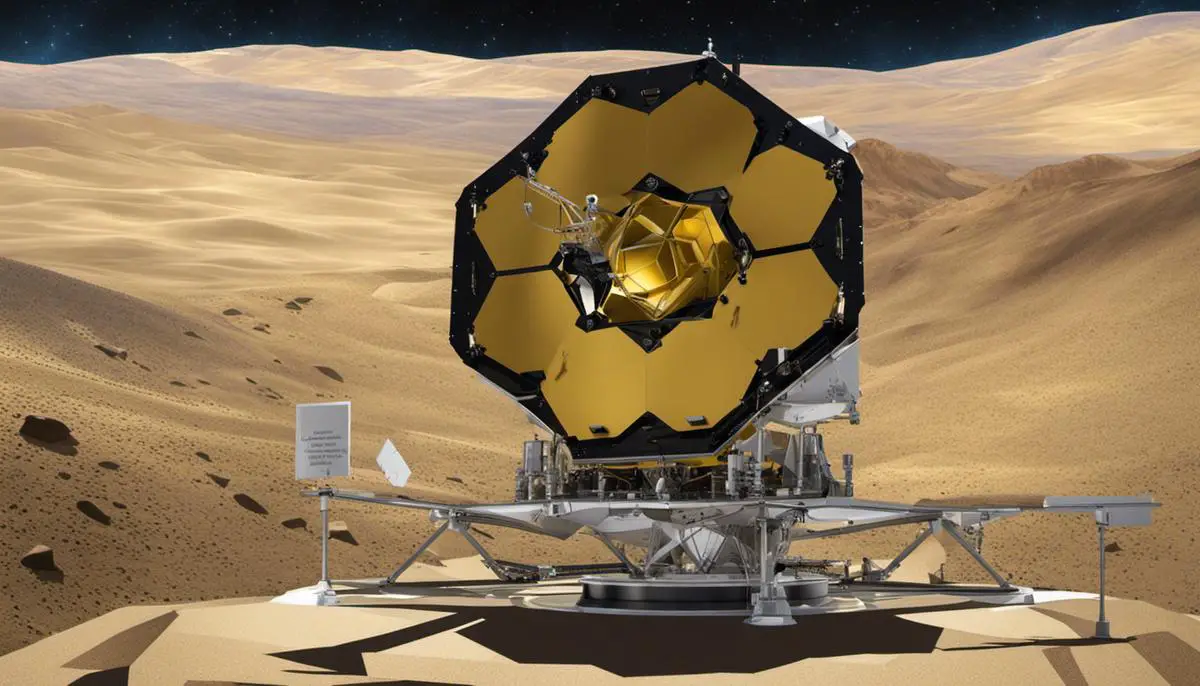In recent years, humanity’s ceaseless pursuit to comprehend the universe’s myriad mysteries has birthed a remarkable piece of technology named the James Webb Space Telescope. Named after NASA’s second administrator, James E. Webb, who played a pivotal role in the Apollo program, this cutting edge telescope has been meticulously crafted with a unique design and instilled with an ambitious purpose. This instrument, outfitted with state-of-the-art scientific tools, aims to drill deeper into the cosmos than ever before, embarking on a journey to the L2, a unique gravitational point in space. Its intricate deployment and scientific missions are geared at untangling some intriguing aspects of our universe. Not just a space observatory, the James Webb Space Telescope, perhaps is a bold testament to human ingenuity and our collective aspiration to decipher the cosmos.
Design and Purpose of James Webb Telescope
Design Elements of the James Webb Space Telescope
The James Webb Space Telescope (JWST), an international collaboration between NASA, the European Space Agency (ESA), and the Canadian Space Agency (CSA), is an example of advanced technology incorporated into a space instrument. Replacing the Hubble Space Telescope, it flaunts a unique design with a collecting area significantly larger than that of its predecessor. Unlike the traditional cylindrical design of most telescopes, the JWST is equipped with a sunshield so large it must be folded origami-style to fit into its rocket for launch.
The telescope’s main mirror comprises 18 separate segments made of lightweight beryllium, coated with a thin layer of gold for optimal reflection of infrared light. These segments, once fully deployed, will work together as one vast mirror. The modular design allows for both an expandable mirror size and ease in transportation.
Size and Structure of the James Webb Space Telescope
JWST is significantly larger than its predecessor; the primary mirror is about 21 feet (6.5 meters) in diameter, as opposed to Hubble’s 8-foot (2.4-meter) mirror. However, despite its larger size, it is lighter due to the utilization of advanced materials and construction techniques.
The JWST’s sunshield, which protects it from the influence of the sun, Earth, and Moon, is about the size of a tennis court. Separated into five layers, each layer blocks solar heat from reaching the observatory’s sensitive instruments, providing a remarkable degree of thermal stability.
Purpose and Scientific Objectives
Designed primarily to observe the universe in the infrared region of the electromagnetic spectrum, the JWST has specific science objectives that it hopes to achieve. These include observing some of the most distant events and objects in the universe, such as the formation of the first galaxies. It’s also tasked with looking at the atmospheres of distant planets to find possible signs of life, known as biosignatures.
Instruments Onboard
The JWST carries four main instruments: the Near Infrared Camera (NIRCam), the Near Infrared Spectrograph (NIRSpec), the Mid-Infrared Instrument (MIRI), and the Fine Guidance Sensor/Near InfraRed Imager and Slitless Spectrograph (FGS/NIRISS).
Each of these instruments plays a vital role in achieving the science goals of the telescope. The NIRCam will identify galaxies that formed in the early universe, while the NIRSpec will separate light into its components to study the physical properties of objects. MIRI will provide exceptional sensitivity to high redshift observations, and FGS/NIRISS will aid in the telescope’s precision guidance and perform imaging and spectroscopy in the near-infrared region.
Introduction to the James Webb Space Telescope Deployment
Our understanding of the cosmos is on the brink of a transformative era with the deployment of the James Webb Space Telescope. Designed with state-of-the-art scientific tools and unprecedented technology, this innovative observatory promises to delve into the mysteries of the early universe and facilitate breakthroughs in exoplanet research.
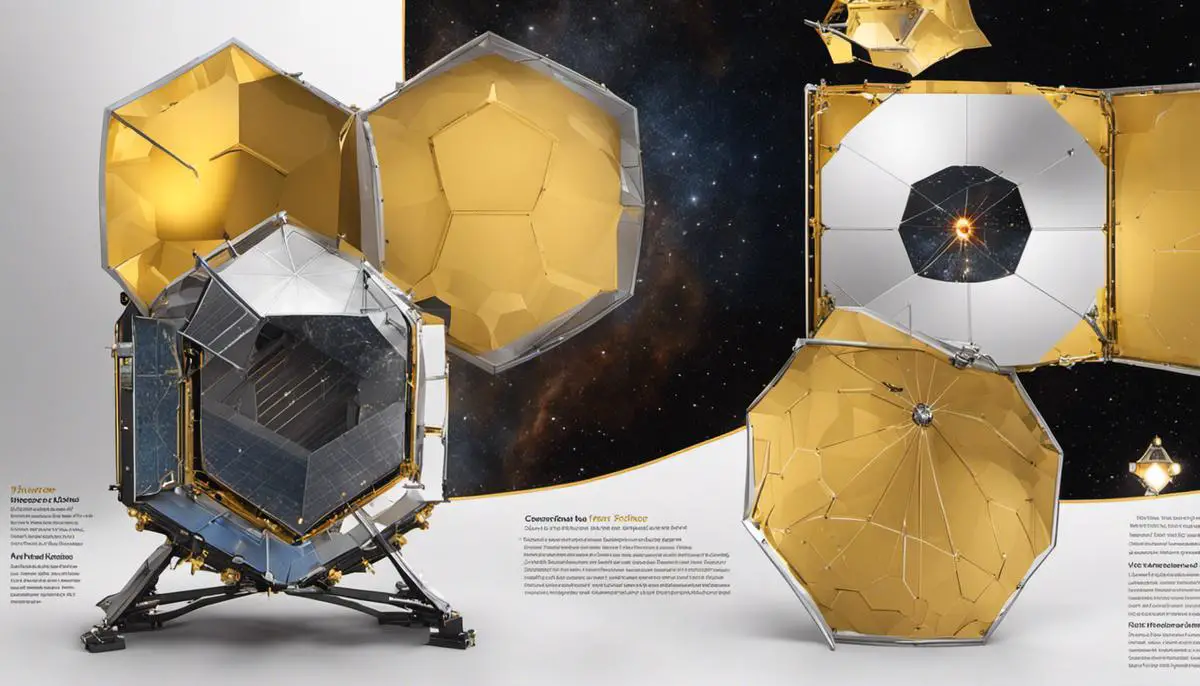
The Launch and Journey to L2
The Inauguration of the James Webb Space Telescope
Marking a historic milestone, the James Webb Space Telescope (JWST) – the trailblazing successor to the Hubble Space Telescope -ash into the cosmos on December 25, 2021. The journey to space commenced at the Guiana Space Centre, situated near Kourou, French Guiana, aboard an Ariane 5 launch vehicle provided by the European Space Agency (ESA). The inception and execution of the JWST project underlines the power of global cooperation, with pivotal contributions from NASA, ESA, and the Canadian Space Agency (CSA).
The Journey to L2
Following the launch, the JWST embarked upon a complex journey to its destination, the second Lagrange Point, or L2. Located approximately 1.5 million kilometers from Earth, L2 is a point in space where the gravitational forces of the Earth and the Moon combine to hold the telescope in a stable position relative to the Earth. This journey to L2 took the JWST just under a month to complete.
The trajectory followed by the JWST to reach L2 is referred to as the L2 Halo Orbit. This is an elliptical path around L2, which allows the telescope to conserve fuel while maintaining its position relative to the Earth and Sun. The telescope does not stay perfectly still at L2, but moves in this small orbit to maintain stability.
Challenges Faced During the Journey
The journey to L2 and the deployment of the telescope were not without challenges. The JWST is an incredibly delicate piece of equipment, and it had to be launched and guided to its destination with utmost care to avoid any potential damage. The launch and in-space deployments were the most risky phases of the JWST mission, as they involved moving parts and non-reversible actions.
One of the major concerns was the unfurling of the enormous sunshield, a procedure which took several days and a high level of precision. The sunshield, about the size of a tennis court, is crucial for the JWST’s operation, as it protects the delicate instruments from the heat and light of the Sun.
Another challenge during the journey was the Mid-Course Correction, a critical engine burn to accurately align the telescope’s trajectory towards L2. Too much propulsion could overshoot the destination, while too little could fall short.
The James Webb Space Telescope’s successful deployment at the second Lagrange point (L2) is a testament to the remarkable engineering and space efforts of the agencies involved. Their well-orchestrated voyage and attendant challenges have highlighted technological advancements and set a strong foundation for future space explorations.
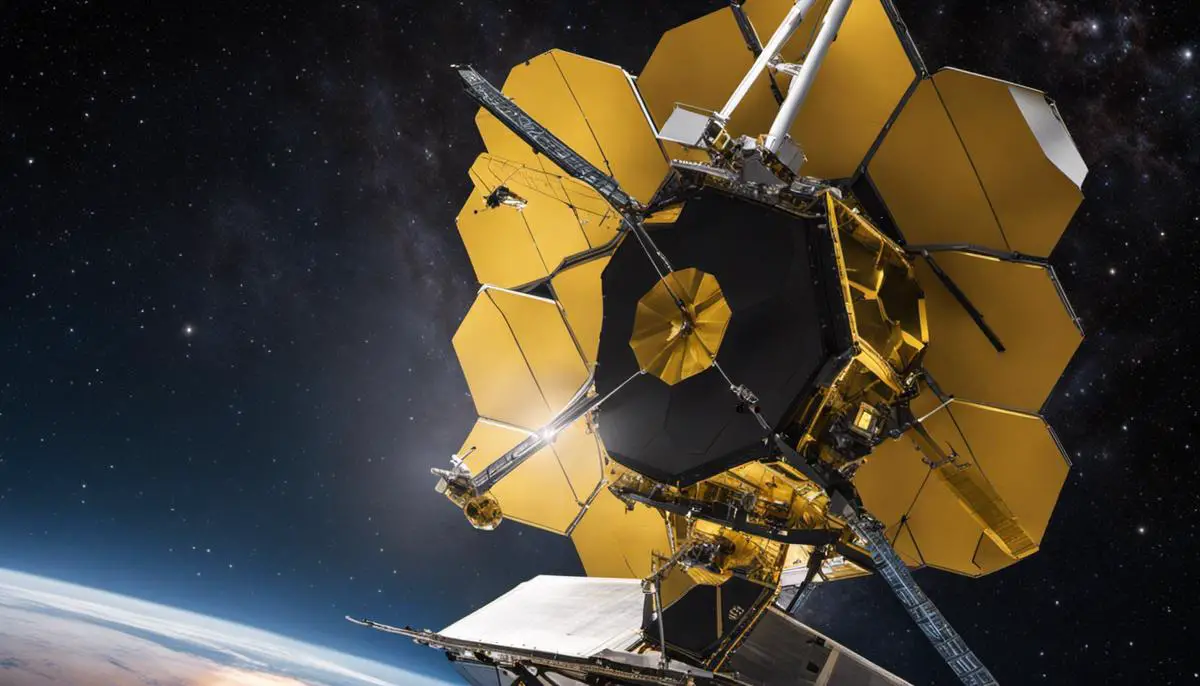
Deployment Sequence of the Telescope
A Closer Look at the James Webb Space Telescope’s Journey to L2
The journey of the James Webb Space Telescope (JWST) commences post-launch. It embarks on a month-long trajectory covering approximately 1.5 million kilometers, heading towards its intended position – the second Lagrange point (L2). Remarkably, this destination is positioned nearly four times farther from Earth than the moon.
Unfolding of the Sunshield
One of the first critical actions post-launch is the unfolding of the sunshield, a five-layer, tennis-court-sized sheet crucial in protecting the telescope from the sunlight’s heat. Approximately 12 hours after launch, the commands are sent to sunshield’s Deployment Release Devices (DRD), starting a series of events that slowly and precisely stretch and separate each layer of the sunshield over a several-days process. This shield provides cooling sufficient to keep the instruments in the cold environment necessary for proper functioning.
Primary Mirror Deployment
After successful sunshield deployment, the primary mirror, made up of 18 gold-coated, hexagonal segments, is then deployed. These panels are folded during launch to fit the telescope inside the Ariane 5 rocket. Once in space, the two ‘wings’ of the primary mirror are unfolded and positioned alongside the central segment creating a 6.5-meter diameter surface – the largest mirror ever launched into space.
Secondary Mirror Deployment
Following this, the deployment of the secondary mirror takes place. It begins by unfolding a tripod-like structure that holds the secondary mirror in front of the primary mirror. Positioned correctly, this secondary mirror directs the collected light from the primary mirror back through a hole in the middle segment of the primary mirror and into the science instruments.
Final Card-Stack Rotation
The final significant deployment event is the ‘card-stack’ rotation. In this process, the main instrument section at the rear of the telescope (known as the Integrated Science Instrument Module) is rotated about 100 degrees. This rotation brings the instruments into the correct position to receive the light reflecting from the mirrors.
The intricate deployment of the James Webb Space Telescope should be viewed as a harmonious sequence, each mechanism and system working seamlessly to help capture the light from the distant universe. Upon the successful completion of this intricate sequence, the telescope is set for a final review before it embarks on its mission — a journey that takes it 13.5 billion years back in time. The main objective? To observe the first galaxies that formed in the early universe and peer into the dust clouds where the miracle of star and planetary systems birth occurs today.
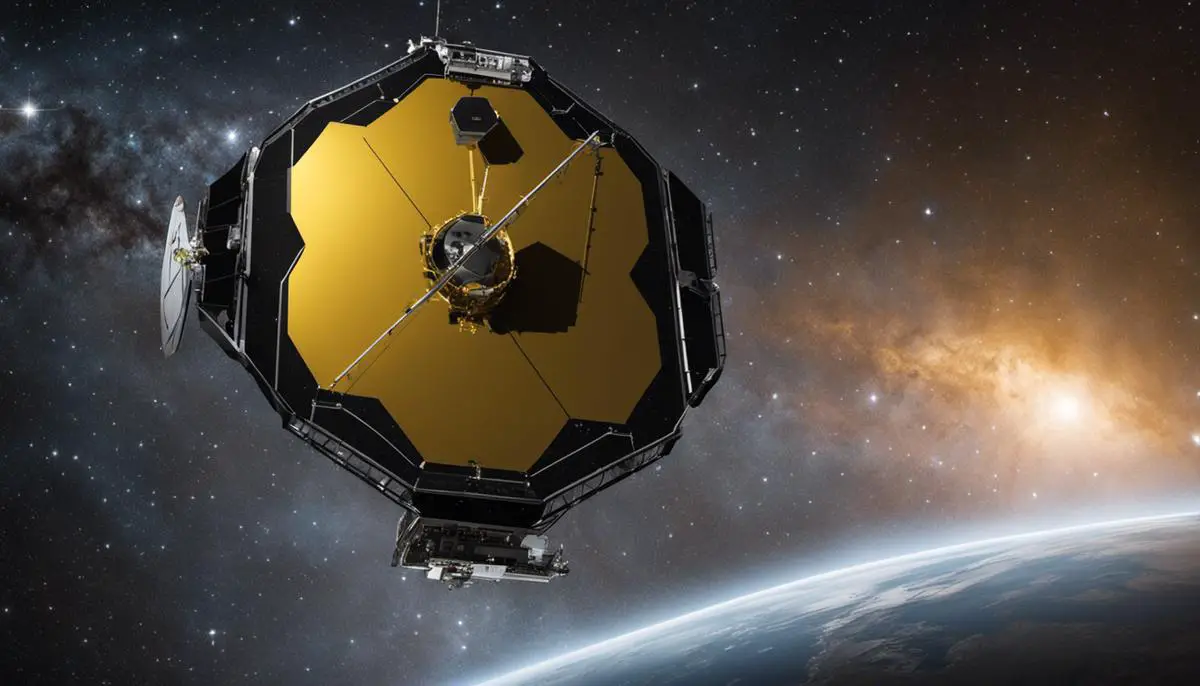
Scientific Objectives and Important Missions
Unmasking the Space Mysteries: The Science Behind the James Webb Space Telescope
The James Webb Space Telescope is a remarkable product of global collaboration involving NASA, the European Space Agency (ESA), and the Canadian Space Agency (CSA). The mission of this space telescope is clear-cut: exploring the deep secrets of the universe.
To delve into the beginnings of the universe, JWST is equipped with tools that would allow astronomers to explore the formation of stars and galaxies. It’s set to travel to the farthest corners of the cosmos and tracing celestial activity that happens billions of light-years away. Its advanced infrared capabilities will allow a crystal-clear view of concealed star formations, essentially acting as a window to the captivating process of stellar birth.
The JWST’s quest doesn’t stop there. It is also geared to study the cosmos’ early structures and the creation of the universe’s “first light”. This knowledge will aid scientists in understanding galaxy evolution and formation, shedding light on our own galaxy’s past and projected future.
As witnesses to the formation of stellar and planetary systems, the JWST will use its high-powered spectrographic tools to study the properties of circumstellar disks. These observations would paint a picture of the birth of new planets, and give us insights into conditions that might harbor life.
Lastly, the JWST is on a vital mission to seek out exotic worlds that could support life. It’s equipped to scan the atmospheres of distant exoplanets for signs of life, a significant initiative in the fascinating field of astrobiology.
James Webb Space Telescope: Future Missions and Research Agenda
With a highly anticipated launch, the James Webb Space Telescope (JWST) is poised to undertake many groundbreaking missions. One of its primary tasks will be the in-depth study of exoplanets. Utilizing transit observation methods, the JWST will analyze the chemical composition of exoplanet atmospheres. This could potentially reveal signs of life, such as oxygen, methane, and water vapor.
Subsequently, the JWST intends to probe the farthest corners of the universe, observing how galaxies come into existence. Its advanced infrared capabilities will enable it to pierce through thick dust clouds, unveiling the cosmic mechanics behind galaxy formation.
In addition, the telescope will conduct extensive surveys of our own Milky Way galaxy, investigating regions of star formation and exploring the mysterious nature of dark matter. The data procured by the JWST will play a vital role in enhancing our understanding of the cosmos.
In a project dubbed the Cosmic Dawn, the JWST proposes to uncover the earliest galaxies in the universe. This study aims to construct a three-dimensional map of the early universe by detecting galaxies at varying distances, providing unique insights into the universe’s nascent stages.
The JWST’s ambitious suite of missions holds immense promise, not just in illuminating our cosmic origins, but also in searching for extraterrestrial life.
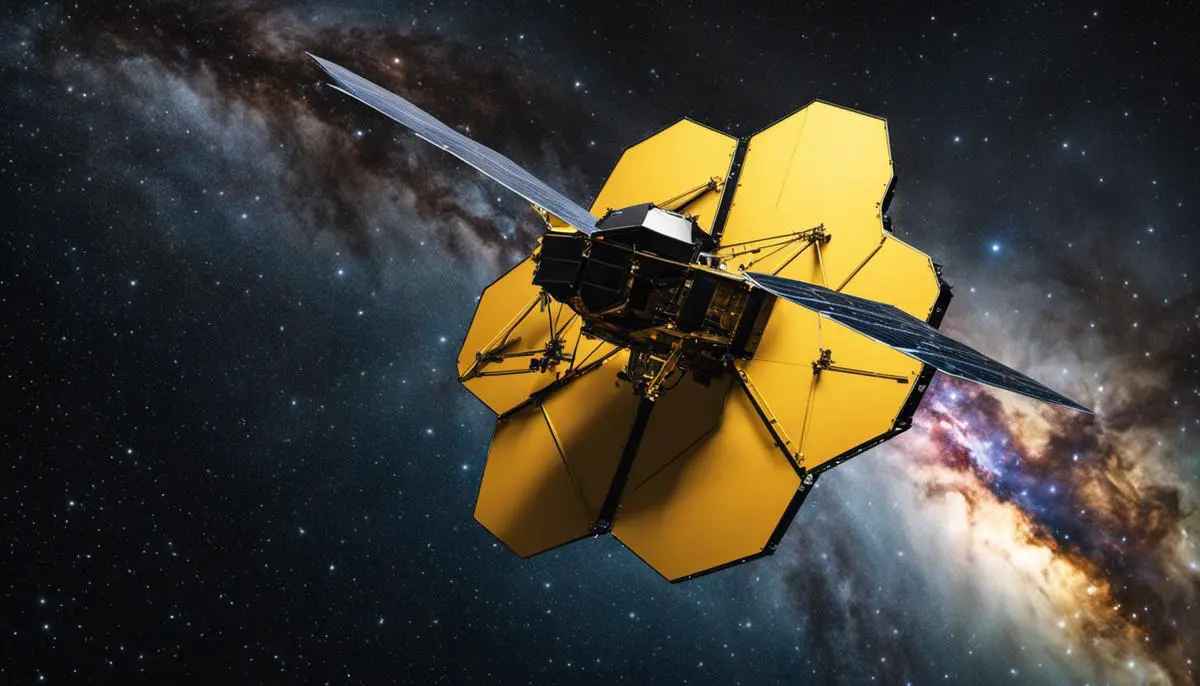
The Potential Impact on Astronomy and Future
How the James Webb Space Telescope Could Transform Astronomy
The James Webb Space Telescope (JWST) is set to make an indelible impact on the field of astronomy. With superior infrared capabilities, the JWST is designed to observe some of the most remote and seminal moments in the universe, such as the birth of the first galaxies. These observations will provide valuable lessons about galactic evolution, broadening our understanding of the cosmos.
Further, the highly capable JWST promises unprecedented high-resolution imagery for studying extrasolar planets, or exoplanets. These enhanced imaging capabilities will open up new frontiers in astronomy, uncovering previously unseen details like an exoplanet’s atmospheric composition and its potential habitability. The discoveries made through the JWST will undoubtedly recalibrate our understanding of the universe and forge a path for future cosmic explorations.
Anticipated Scientific Breakthroughs
There are several anticipated scientific breakthroughs expected from the deployment of JWST. One fundamental breakthrough will be gaining understanding of star and planet formation. Through JWST’s advanced suite of instruments, we will have our best look yet at planetary systems forming in dust clouds around stars. The telescope could also help unravel mysteries of the life cycles of stars, from their formation to their death.
Secondly, JWST is expected to significantly improve our understanding of the general chemistry of the universe, helping astronomers decode the constituents and conditions of interstellar and intergalactic space.
Future Role in Deep Space Exploration
The deployment of JWST is a key milestone in the future of deep space exploration. Not only will the telescope provide vital information about far-flung celestial bodies, but it can also act as a scout for future manned and unmanned missions. By documenting and analyzing the universe in infrared light, the telescope helps in identifying celestial bodies that might be worth closer examination. These future space missions could then focus on these celestial bodies for in-depth analysis and perhaps, eventual human visitation.
Legacy of James Webb Telescope
The James Webb Space Telescope stands as a testament to human ingenuity and our endless pursuit of knowledge. Its deployment is the culmination of years of scientific effort and sets a new standard for what’s possible in space technology. The high standards set by JWST’s technology are likely to be valued by future telescope designers and astronomers for years to come.
In terms of legacy, JWST itself can be seen as a successor to the iconic Hubble Space Telescope. While Hubble transformed our understanding of the universe, JWST is expected to take it a step further, peering back in time to the earliest galaxies and forward to potential life-bearing exoplanets. Like Hubble, JWST will undoubtedly leave a legacy for future technologies, pushing the boundaries of what is possible and inspiring new generations of explorers and inventors.
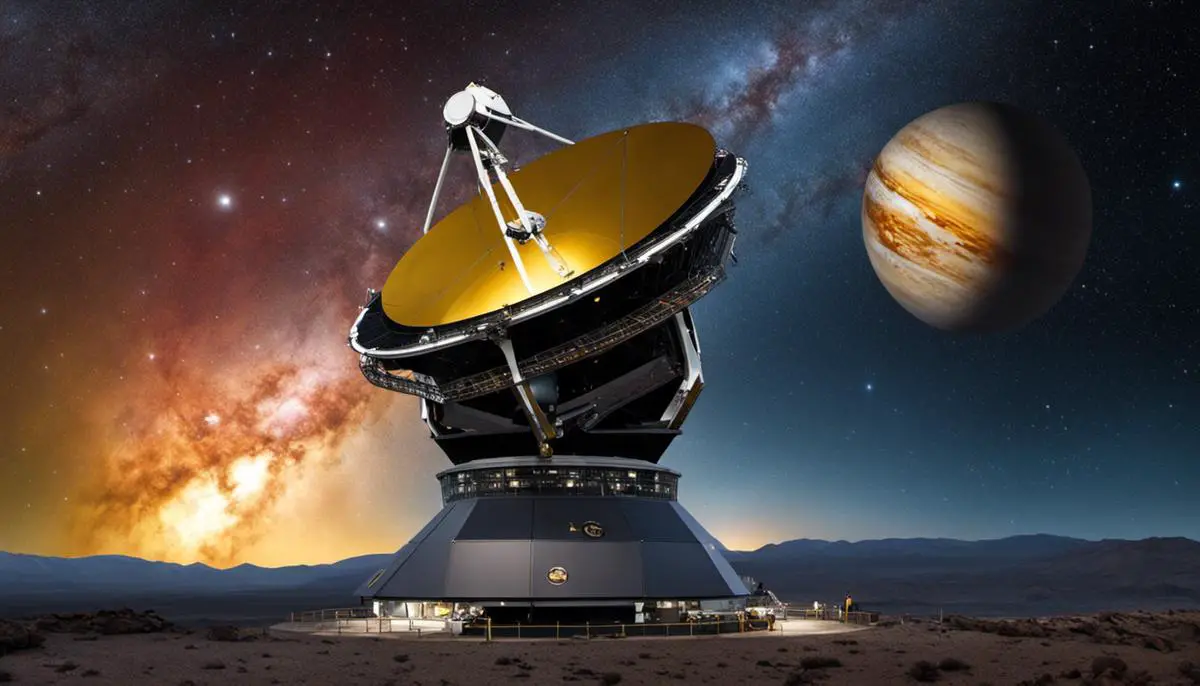
The James Webb Space Telescope, with its unprecedented technology and lofty scientific objectives, stands as a beacon of human advancement and curiosity. Its exploration potential extends beyond just scrutinizing the birth of stars, or the formation of galaxies; it may open avenues to understand the very constructs of life in the universe. The telescope’s anticipated impact on astronomy is likely to be profound, catalyzing scientific breakthroughs that elevate our understanding of the universe to new heights. Not just another tool for astronomers, James Webb is an emblem of our shared hope to delve deeper into the infinity of space and time. Its legacy is expected to ripple through future generations of technology and science, reinforcing the idea that our quest for knowledge is, indeed, limitless.
![]()
